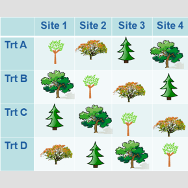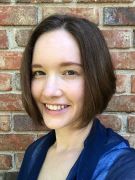 Have you ever wondered why there are so many different types of experimental designs, and how a researcher would go about choosing among them to best address their research questions?
Have you ever wondered why there are so many different types of experimental designs, and how a researcher would go about choosing among them to best address their research questions?
 In this training, we examine five different types of classic experimental design, from completely randomized design to various types of block designs to split plot.
In this training, we examine five different types of classic experimental design, from completely randomized design to various types of block designs to split plot.
For each design, we’ll discuss the advantages and disadvantages, provide examples, and discuss possible methods of analysis. Perhaps surprisingly, there are multiple methods of analysis that can be used with some of these designs.
Note: This training is an exclusive benefit to members of the Statistically Speaking Membership Program and part of the Stat’s Amore Trainings Series. Each Stat’s Amore Training is approximately 90 minutes long.
About the Instructor
 Kim is a workshop instructor for The Analysis Factor and owner/lead consultant at K.R. Love Quantitative Consulting and Collaboration.
Kim is a workshop instructor for The Analysis Factor and owner/lead consultant at K.R. Love Quantitative Consulting and Collaboration.
She has worked as a statistical consultant and collaborator in multiple professional roles, most recently as the associate director of the University of Georgia Statistical Consulting Center.
Kim has more than a decade of professional and academic experience in the fields of regression and linear models, categorical data, generalized linear models, mixed effects models, nonlinear models, repeated measures, and experimental design. She has a B.A. in mathematics from the University of Virginia, and an M.S. and PhD in statistics from Virginia Tech.
Just head over and sign up for Statistically Speaking.
You'll get access to this training webinar, 130+ other stats trainings, a pathway to work through the trainings that you need — plus the expert guidance you need to build statistical skill with live Q&A sessions and an ask-a-mentor forum.

Really looking forward-thank you, pam